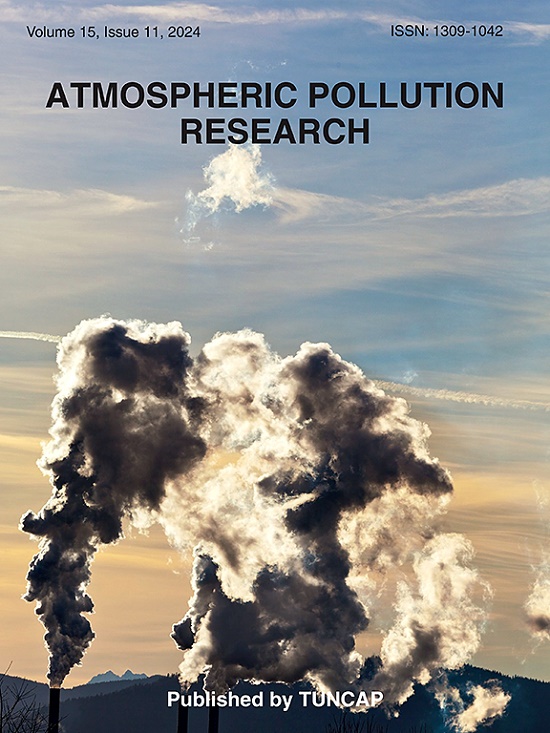Research on the impact of urban built environments on PM2.5 pollution based on machine learning methods
IF 3.9
3区 环境科学与生态学
Q2 ENVIRONMENTAL SCIENCES
引用次数: 0
Abstract
Since PM2.5 pollution poses a serious threat to the environment and health, understanding its interaction with the urban built environment (UBE) is essential for effective mitigation. To assess the impact of UBE on PM2.5 pollution, this study quantitatively evaluates the relationship between them. First, given the limitation that current PM2.5 concentration collection mainly relies on fixed monitoring stations, this study set up a taxi mobile monitoring system. Second, aiming at the deficiency of traditional extraction mostly based on remote sensing imagery, this study proposed a deep learning-based method to calculate the green and sky visibility index. Pearson's preliminary correlation analysis showed that climate factors were most correlated to changes in PM2.5 concentration. Furthermore, the prediction effects of nine mainstream machine learning methods were compared. The results showed that (1) The overall prediction performance of summer (R2 = 0.92) and autumn (R2 = 0.93) outperformed the one of spring (R2 = 0.88) and winter (R2 = 0.86) seasons. (2) The Random Forest and LightGBM models obtained optimal predictions with R2 of 0.907 and 0.916, respectively. (3) The complex nonlinear relationship between the UBE and PM2.5 concentration needed to be captured by the Shapley additive explanations method. The findings suggested controlling the space enclosure index between 0.08 and 0.15, plot area ratio within 0.5, and building density within 0.2. This study provided a general analytical framework for understanding the diffusion mechanism of PM2.5 concentrations and a theoretical basis for green urban design.
基于机器学习方法的城市建成环境对PM2.5污染的影响研究
由于PM2.5污染对环境和健康构成严重威胁,因此了解其与城市建筑环境(UBE)的相互作用对于有效缓解PM2.5污染至关重要。为了评估UBE对PM2.5污染的影响,本研究定量评价了两者之间的关系。首先,针对目前PM2.5浓度采集主要依靠固定监测站的局限性,本研究搭建了出租车移动监测系统。其次,针对传统多基于遥感影像提取的不足,提出了一种基于深度学习的绿色和天空能见度指数计算方法。Pearson初步相关分析显示,气候因子与PM2.5浓度变化的相关性最大。此外,比较了九种主流机器学习方法的预测效果。结果表明:(1)夏季(R2 = 0.92)和秋季(R2 = 0.93)的总体预测性能优于春季(R2 = 0.88)和冬季(R2 = 0.86)。(2)随机森林模型和LightGBM模型的预测结果最优,R2分别为0.907和0.916。(3) UBE与PM2.5浓度之间的复杂非线性关系需要通过Shapley加性解释方法来捕捉。建议空间封闭指数控制在0.08 ~ 0.15之间,容积率控制在0.5以内,建筑密度控制在0.2以内。本研究为理解PM2.5浓度扩散机制提供了一般性的分析框架,为绿色城市设计提供了理论依据。
本文章由计算机程序翻译,如有差异,请以英文原文为准。
求助全文
约1分钟内获得全文
求助全文
来源期刊

Atmospheric Pollution Research
ENVIRONMENTAL SCIENCES-
CiteScore
8.30
自引率
6.70%
发文量
256
审稿时长
36 days
期刊介绍:
Atmospheric Pollution Research (APR) is an international journal designed for the publication of articles on air pollution. Papers should present novel experimental results, theory and modeling of air pollution on local, regional, or global scales. Areas covered are research on inorganic, organic, and persistent organic air pollutants, air quality monitoring, air quality management, atmospheric dispersion and transport, air-surface (soil, water, and vegetation) exchange of pollutants, dry and wet deposition, indoor air quality, exposure assessment, health effects, satellite measurements, natural emissions, atmospheric chemistry, greenhouse gases, and effects on climate change.
 求助内容:
求助内容: 应助结果提醒方式:
应助结果提醒方式:


